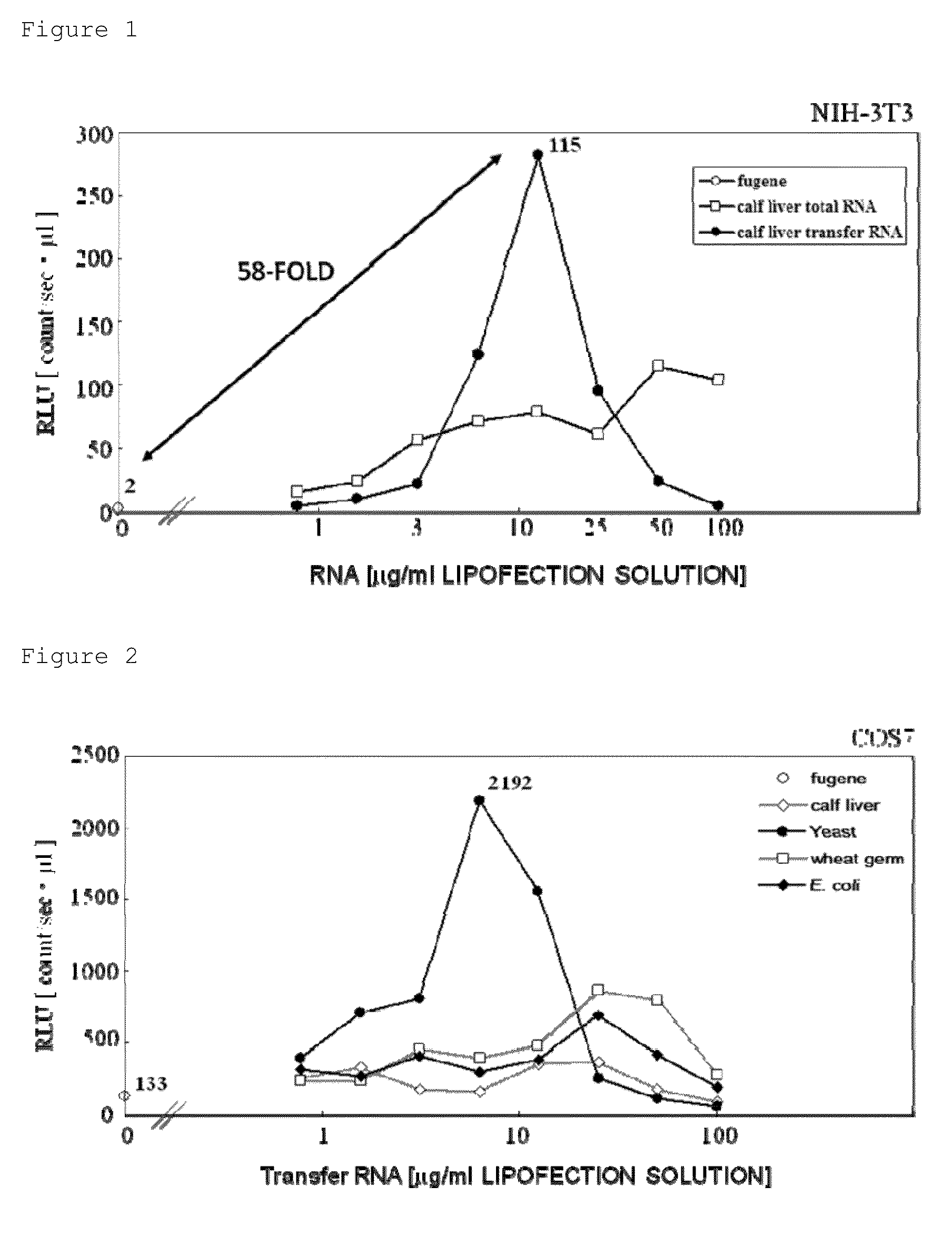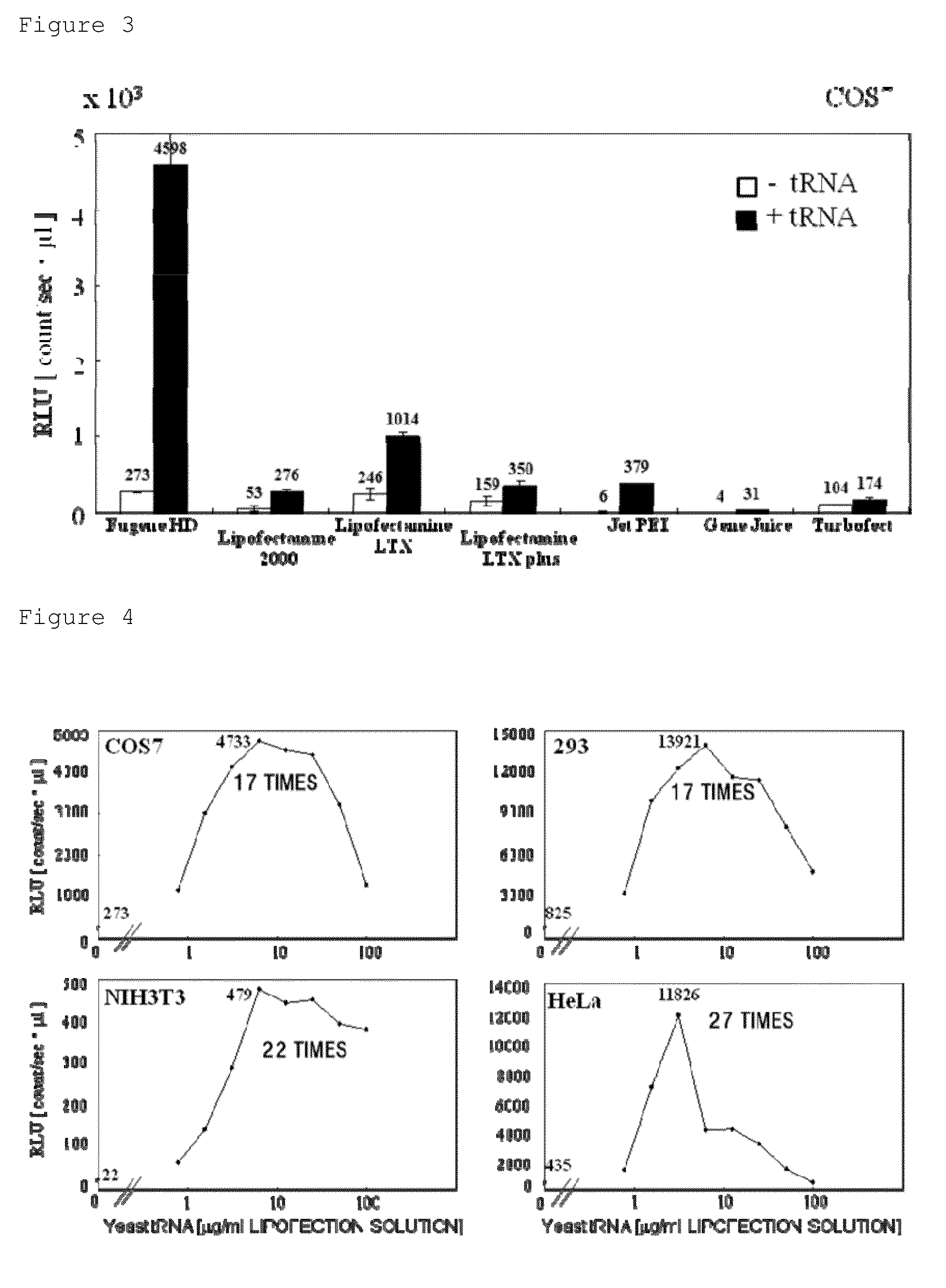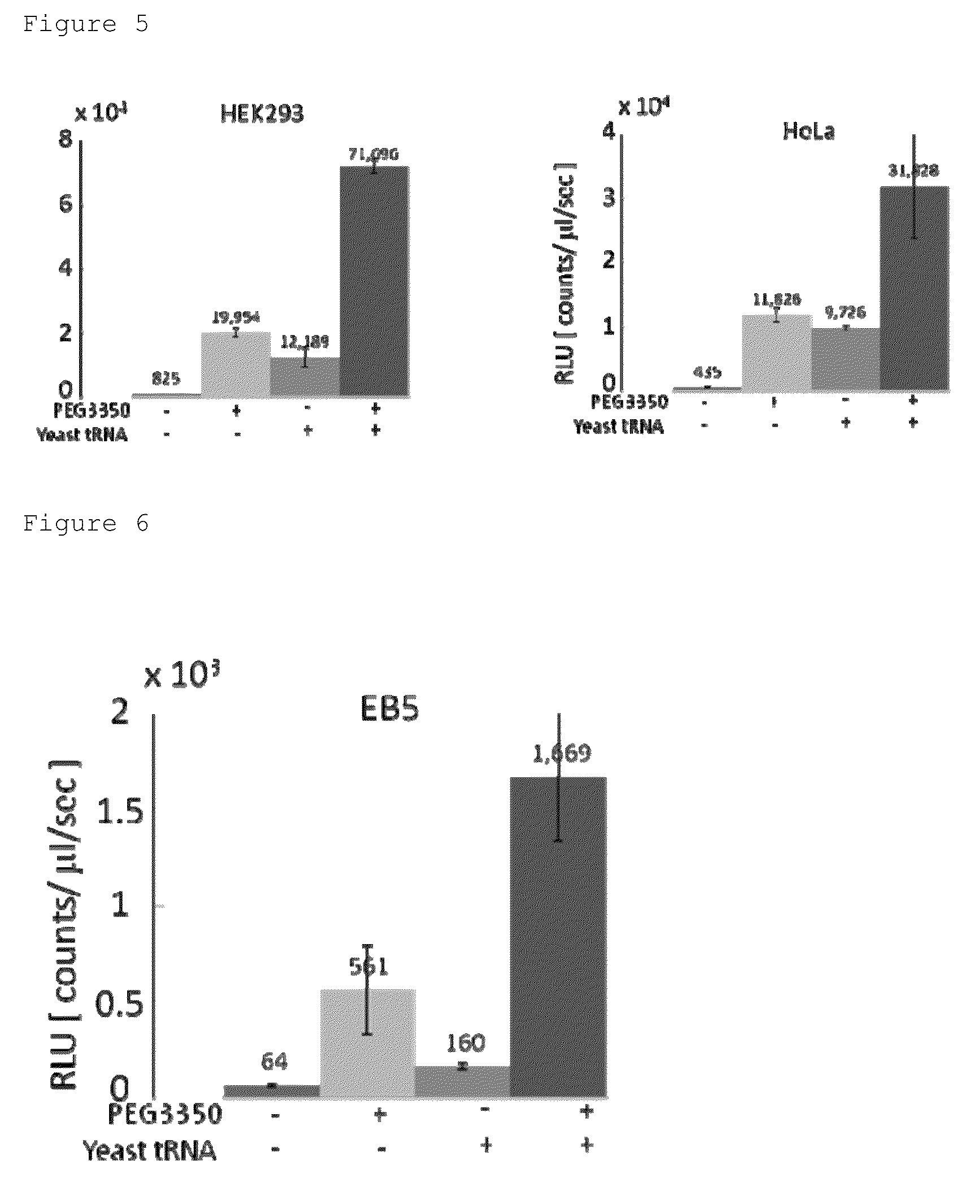Agent for improving gene transfer efficiency to mammalian cells
a technology of efficiency improvement and gene transfer, applied in the field of efficiency improvement agent for can solve the problems of inability to teach the use of trna in the efficiency of gene transfer is inferior to the efficiency of electroporation or virus vector use, and the method of lipofection has the demerit of being inferior in terms of gene transfer efficiency, so as to improve the efficiency of gene transfer to mammalian cells and high efficiency
- Summary
- Abstract
- Description
- Claims
- Application Information
AI Technical Summary
Benefits of technology
Problems solved by technology
Method used
Image
Examples
example 1
Influence of tRNA on Gene Transfer Efficiency
[0054]To examine the influence of tRNA on gene transfer efficiency, the following lipofection experiment was performed.
[0055]pCMV-GLuc (from New England BioLab) was first provided as a reporter plasmid. In the pCMV-GLuc, a gene encoding Gaussia-derived secretory luciferase (Gaussia Luciferase: GLuc) is positioned under the control of CMV (Cytomegalovirus) promoter. The CMV promoter is suitable for the preparation of a reporter plasmid for the lipofection experiment because it is a promoter constitutively expressed in mammalian cells.
[0056]Calf liver-derived tRNA (from Sigma Aldrich, “Ribonucleic acid, transfer Type VI From Bovine liver”, Cat#R4752-50UN) and total RNA (from Sigma Aldrich, “Ribonucleic acid from calf liver Type IV”, Cat#R7250-100MG) were then provided. Almost all of the total RNA consist of rRNA. Subsequently, 0.5 μg of pCMV-GLuc and a predetermined amount of RNA (tRNA or total RNA) were added to each 100 μL of distilled wa...
example 2
Effect of tRNA Derived from Various Organism Species
[0059]In Example 1, mouse-derived cells were used as host cells and calf-derived tRNA was used. To examine whether even the use of another mammalian cells as host cells and tRNA derived from a different organism species had the effect of improving gene transfer efficiency, the following lipofection experiment was performed.
[0060]As tRNA, in addition to calf liver-derived tRNA, there were provided yeast-derived tRNA (from Sigma Aldrich, “Ribonucleic acid, Type X-SA transfer from baker's yeast”, Cat#R8759-100UN), wheat germ-derived tRNA (from Sigma Aldrich, “Ribonucleic acid, Type V, transfer from Wheat Germ”, Cat#R7876-500UN), E. coli-derived tRNA (from Sigma Aldrich, “Ribonucleic acid, transfer Type XX from Escherichia coli strain W”, Cat#R1753-100UN). COS7 cells as monkey kidney-derived cultured cells were provided as host cells. The lipofection experiment was carried out in the same way as the lipofection experiment in Example 1 ...
example 3
Dependency of Effect on Type of Lipofection Reagent
[0062]In Examples 1 and 2, Fugene (registered trademark) HD transfection reagent (from Roche Applied Science) was used as a lipofection reagent. Accordingly, to examine whether the tRNA's effect of improving gene transfer efficiency was obtained even when a different lipofection reagent was used, the following lipofection experiment was carried out.
[0063]The lipofection experiment was performed in the same way as the lipofection experiment in Example 2 except for using Fugene (registered trademark) HD transfection reagent, Lipofectamine (registered trademark) 2000 (from Invitrogen), Lipofectamine (registered trademark) LTX (from Invitrogen), Lipofectamine (registered trademark) LTX plus (from Invitrogen), JetPEI (registered trademark) (from Polyplus-transfection), GeneJuice (registered trademark) (from Takara Bio Inc.), or Turbofect (registered trademark) (from Fermentas) as a lipofection reagent and using 0.625 μg (6.25 μg / mL in te...
PUM
| Property | Measurement | Unit |
|---|---|---|
| concentration | aaaaa | aaaaa |
| mole ratio | aaaaa | aaaaa |
| concentration | aaaaa | aaaaa |
Abstract
Description
Claims
Application Information
 Login to View More
Login to View More - R&D
- Intellectual Property
- Life Sciences
- Materials
- Tech Scout
- Unparalleled Data Quality
- Higher Quality Content
- 60% Fewer Hallucinations
Browse by: Latest US Patents, China's latest patents, Technical Efficacy Thesaurus, Application Domain, Technology Topic, Popular Technical Reports.
© 2025 PatSnap. All rights reserved.Legal|Privacy policy|Modern Slavery Act Transparency Statement|Sitemap|About US| Contact US: help@patsnap.com



